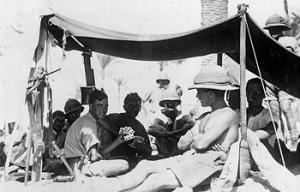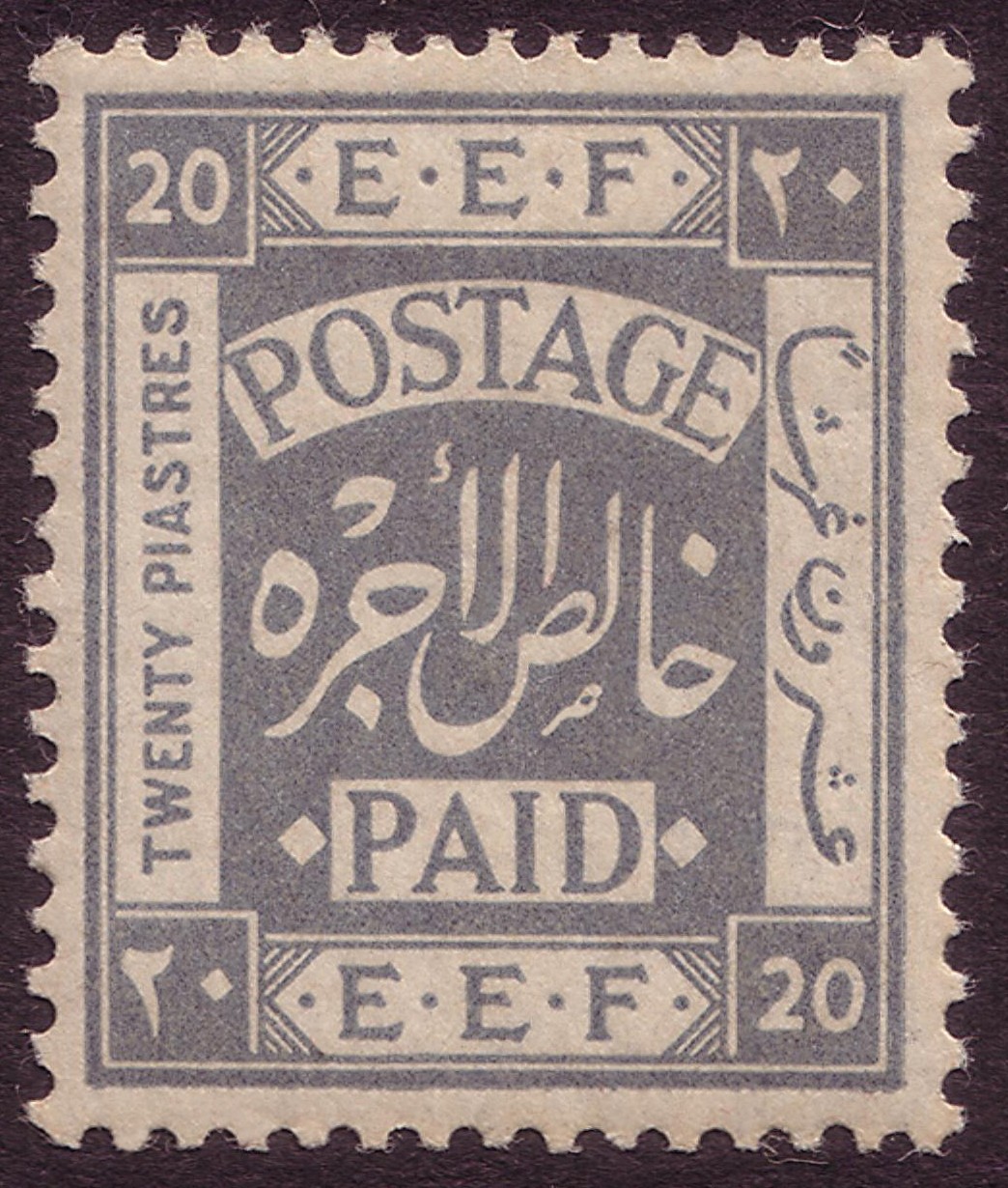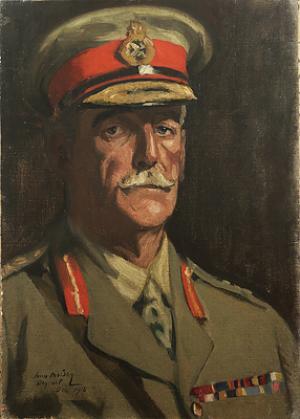|
First Transjordan Attack On Amman
The First Transjordan attack on Amman (known to the British as the First Attack on Amman)Battles Nomenclature Committee 1922 p. 33 and to their enemy as the First Battle of the JordanErickson 2001 p. 195 took place between 21 March and 2 April 1918, as a consequence of the successful Battle of Tell 'Asur which occurred after the Capture of Jericho in February and the Occupation of the Jordan Valley began, during the Sinai and Palestine Campaign of World War I. During the First Transjordan attack large incursions into Ottoman territory occurred. Firstly the Passage of the Jordan River, was successfully captured between 21 and 23 March, followed by the first occupation of Es Salt in the hills of Moab between 24 and 25 March. The First Battle of Amman took place between 27 and 31 March when the Anzac Mounted Division and the Imperial Camel Corps Brigade (fighting dismounted as infantry) were reinforced by two battalions of 181st Brigade followed by a second two battalions from the ... [...More Info...] [...Related Items...] OR: [Wikipedia] [Google] [Baidu] |
Middle Eastern Theatre Of World War I
The Middle Eastern theatre of World War I saw action between 29 October 1914 and 30 October 1918. The combatants were, on one side, the Ottoman Empire (including the majority of Kurdish tribes, a relative majority of Arabs, and Caucasian ''Tatars''), with some assistance from the other Central Powers; and on the other side, the British (with the help of Jews, Greeks, Assyrians, some Kurdish tribes, and many Arabs, along with Hindu and Muslim colonial troops from India), the Russians (with the help of Armenians, Assyrians, and occasionally some Kurdish tribes) and the French (with its North African and West African Muslim colonial troops) from among the Allied Powers. There were five main campaigns: the Sinai and Palestine Campaign, the Mesopotamian Campaign, the Caucasus Campaign, the Persian Campaign, and the Gallipoli Campaign. There were also several minor campaigns: Arab Campaign, and South Arabia Campaign. Both sides used local asymmetrical forces in the region. ... [...More Info...] [...Related Items...] OR: [Wikipedia] [Google] [Baidu] |
Occupation Of The Jordan Valley
The occupation of the Jordan Valley by the Egyptian Expeditionary Force (EEF) began in February 1918 during the Sinai and Palestine Campaign of World War I. After the Capture of Jericho in February the Auckland Mounted Rifle Regiment began patrolling an area of the Jordan Valley near Jericho at the base of the road from Jerusalem. Towards the end of March the First Transjordan attack on Amman and the First Battle of Amman were launched from the Jordan Valley followed a few weeks later by the equally unsuccessful Second Transjordan attack on Shunet Nimrin and Es Salt at the end of April. During this time the occupation of the Jordan was fully established and continued through the summer of 1918. The occupation ended in September with the Battle of Megiddo which consisted of the Battle of Sharon and the Battle of Nablus. The Third Transjordan attack and Second Battle of Amman were fought as part of the Battle of Nablus. Despite the difficult climate and the unhealthy environmen ... [...More Info...] [...Related Items...] OR: [Wikipedia] [Google] [Baidu] |
Gaza City
Gaza (;''The New Oxford Dictionary of English'' (1998), , p. 761 "Gaza Strip /'gɑːzə/ a strip of territory in Palestine, on the SE Mediterranean coast including the town of Gaza...". ar, غَزَّة ', ), also referred to as Gaza City, is a Palestinian city in the Gaza Strip, with a population of 590,481 (in 2017), making it the largest city in the State of Palestine. Inhabited since at least the 15th century BCE, Gaza has been dominated by several different peoples and empires throughout its history. The Philistines made it a part of their pentapolis after the Ancient Egyptians had ruled it for nearly 350 years. Under the Roman Empire Gaza experienced relative peace and its port flourished. In 635 CE, it became the first city in Palestine to be conquered by the Muslim Rashidun army and quickly developed into a center of Islamic law. However, by the time the Crusaders invaded the country starting in 1099, Gaza was in ruins. In later centuries, Gaza experienced several ... [...More Info...] [...Related Items...] OR: [Wikipedia] [Google] [Baidu] |
Battle Of Jerusalem
The Battle of Jerusalem occurred during the British Empire's "Jerusalem Operations" against the Ottoman Empire, in World War I, when fighting for the city developed from 17 November, continuing after the surrender until 30 December 1917, to secure the final objective of the Southern Palestine Offensive during the Sinai and Palestine Campaign of World War I. Before Jerusalem could be secured, two battles were recognised by the British as being fought in the Judean Hills to the north and east of the Hebron–Junction Station line. These were the Battle of Nebi Samwill from 17 to 24 November and the Defence of Jerusalem from 26 to 30 December 1917. They also recognised within these Jerusalem Operations, the successful second attempt on 21 and 22 December 1917 to advance across the Nahr el Auja, as the Battle of Jaffa, although Jaffa had been occupied as a consequence of the Battle of Mughar Ridge on 16 November.Battles Nomenclature Committee 1922, p. 32 This series of battle ... [...More Info...] [...Related Items...] OR: [Wikipedia] [Google] [Baidu] |
Battle Of Mughar Ridge
The Battle of Mughar Ridge, officially known by the British as the action of El Mughar, took place on 13 November 1917 during the Pursuit phase of the Southern Palestine Offensive of the Sinai and Palestine Campaign in the First World War. Fighting between the advancing Egyptian Expeditionary Force (EEF) and the retreating Yildirim Army Group, occurred after the Battle of Beersheba and the Third Battle of Gaza. Operations occurred over an extensive area north of the Gaza to Beersheba line and west of the road from Beersheba to Jerusalem via Hebron. Strong Ottoman Army positions from Gaza to the foothills of the Judean Hills had successfully held out against British Empire forces for a week after the Ottoman army was defeated at Beersheba. But the next day, 8 November, the main Ottoman base at Sheria was captured after two days' fighting and a British Yeomanry cavalry charge at Huj captured guns; Ottoman units along the whole line were in retreat. The XXI Corps and Desert ... [...More Info...] [...Related Items...] OR: [Wikipedia] [Google] [Baidu] |
Battle Of Megiddo (1918)
The Battle of Megiddo ( tr, ), also known in Turkish as the ("Rout of Nablus") or the ("Breakthrough at Nablus"), was fought between 19 and 25 September 1918, on the Plain of Sharon, in front of Tulkarm, Tabsor and Arara in the Judean Hills as well as on the Esdralon Plain at Nazareth, Afulah, Beisan, Jenin and Samakh. Its name, which has been described as "perhaps misleading" since very limited fighting took place near Tel Megiddo, was chosen by Allenby for its biblical and symbolic resonance. The battle was the final Allied offensive of the Sinai and Palestine Campaign of the First World War. The contending forces were the Allied Egyptian Expeditionary Force, of three corps including one of mounted troops, and the Ottoman Yildirim Army Group which numbered three armies, each the strength of barely an Allied corps. The series of battles took place in what was then the central and northern parts of Ottoman Palestine and parts of present-day Israel, Syria and Jordan. A ... [...More Info...] [...Related Items...] OR: [Wikipedia] [Google] [Baidu] |
Egyptian Expeditionary Force
The Egyptian Expeditionary Force (EEF) was a British Empire military formation, formed on 10 March 1916 under the command of General Archibald Murray from the Mediterranean Expeditionary Force and the Force in Egypt (1914–15), at the beginning of the Sinai and Palestine Campaign of the First World War. History Formed in the British protectorate of the Sultanate of Egypt, the initially small force was raised to guard the Suez Canal and Egypt. After the withdrawal from the Gallipoli Campaign the force grew into a large reserve to provide reinforcements for the Western Front (World War I), Western Front, while the Western Frontier Force fought in the Senussi Campaign from 1915 to 1917 and the Eastern Force (EF) defended the canal at the Battle of Romani in August 1916. Following the victory at Romani, part of the Eastern Force pursued the Ottoman Empire, Ottoman invading force back to Palestine (region), Palestine after the victories at the Battle of Magdhaba in December 1916 and t ... [...More Info...] [...Related Items...] OR: [Wikipedia] [Google] [Baidu] |
Jordan Rift Valley
The Jordan Rift Valley, also Jordan Valley ''Bīrʿāt haYardēn'', ar, الغور Al-Ghor or Al-Ghawr),, date=November 2022 also called the Syro-African Depression, is an elongated depression located in modern-day Israel, and Jordan. This geographic region includes the entire length of the Jordan River – from its sources, through the Hula Valley, the Korazim block, the Sea of Galilee, the (Lower) Jordan Valley, all the way to the Dead Sea, the lowest land elevation on Earth – and then continues through the Arabah depression, the Gulf of Aqaba whose shorelines it incorporates, until finally reaching the Red Sea proper at the Straits of Tiran. History and physical features The Jordan Rift Valley was formed many millions of years ago in the Miocene epoch (23.8 – 5.3 Myr ago) when the Arabian Plate moved northward and then eastward away from Africa. One million years later, the land between the Mediterranean and the Jordan Rift Valley rose so that the sea water sto ... [...More Info...] [...Related Items...] OR: [Wikipedia] [Google] [Baidu] |
60th London Division
The 60th (2/2nd London) Division was an infantry division of the British Army raised during the First World War. It was the second line-formation of the 47th (1/2nd London) Division, and was the second of two such Territorial Force divisions formed from the surplus of London recruits in 1914. The divisional insignia was a bee. Role At first the division, headquartered at Sutton Veny, Wiltshire, merely supplied the first-line Territorial divisions with drafts to replace losses through casualties. In late 1915 the division began to be equipped for field operations although it was not sent to France until July 1916, after 88 trains had conveyed the men to Southampton from camps around Warminster, Heytesbury, and Codford stations. Its engagements included the Third Battle of Gaza, the Battle of Beersheba (1917), the Battle of Jerusalem (1917), the Second Transjordan attack on Shunet Nimrin and Es Salt (1918), the Battle of Megiddo (1918), the Battle of Sharon (1918), and the Ba ... [...More Info...] [...Related Items...] OR: [Wikipedia] [Google] [Baidu] |
Imperial Camel Corps Brigade
The Imperial Camel Corps Brigade (ICCB) was a camel-mounted infantry brigade that the British Empire raised in December 1916 during the First World War for service in the Middle East. From a small beginning the unit eventually grew to a brigade of four battalions, one battalion each from Great Britain and New Zealand and two battalions from Australia. Support troops included a mountain artillery battery, a machine gun squadron, Royal Engineers, a field ambulance, and an administrative train. The ICC became part of the Egyptian Expeditionary Force (EEF) and fought in several battles and engagements, in the Senussi Campaign, the Sinai and Palestine Campaign, and in the Arab Revolt. The brigade suffered 246 men killed. The ICC was disbanded in May 1919 after the end of the war. Formation Background The advantages of camels in a desert environment are well known, and the British Army had raised the Somaliland Camel Corps in 1912. However the British Army forces serving in Eg ... [...More Info...] [...Related Items...] OR: [Wikipedia] [Google] [Baidu] |
First Battle Of Amman
The First Battle of Amman was fought from 27 to 31 March 1918 during the First Transjordan attack on Amman of the Sinai and Palestine Campaign of the First World War. The 60th (London) Division and the Anzac Mounted Division attacked the Ottoman garrison at Amman deep in enemy occupied territory, from their front line, after capturing Es Salt and Shunet Nimrin. The Egyptian Expeditionary Force (EEF) was successfully counterattacked by Ottoman Empire forces forcing them to retreat back to the bridgeheads captured on the Jordan River. Following the victories at the Third Battle of Gaza and the Battle of Beersheba, the EEF had pursued the retreating Ottoman armies, fighting successful battles at Mughar Ridge in November and capturing Jerusalem in December. During the winter of 1917/1918 these considerable territorial gains were consolidated and the front line established. In February 1918 the front line was pushed eastwards by the EEF when the right flank of the Jaffa to Jerus ... [...More Info...] [...Related Items...] OR: [Wikipedia] [Google] [Baidu] |
Moab
Moab ''Mōáb''; Assyrian: 𒈬𒀪𒁀𒀀𒀀 ''Mu'abâ'', 𒈠𒀪𒁀𒀀𒀀 ''Ma'bâ'', 𒈠𒀪𒀊 ''Ma'ab''; Egyptian: 𓈗𓇋𓃀𓅱𓈉 ''Mū'ībū'', name=, group= () is the name of an ancient Levantine kingdom whose territory is today located in the modern state of Jordan. The land is mountainous and lies alongside much of the eastern shore of the Dead Sea. The existence of the Kingdom of Moab is attested to by numerous archaeological findings, most notably the Mesha Stele, which describes the Moabite victory over an unnamed son of King Omri of Israel, an episode also noted in 2 Kings . The Moabite capital was Dibon. According to the Hebrew Bible, Moab was often in conflict with its Israelite neighbours to the west. Etymology The etymology of the word Moab is uncertain. The earliest gloss is found in the Koine Greek Septuagint () which explains the name, in obvious allusion to the account of Moab's parentage, as ἐκ τοῦ πατρός μου ("from my ... [...More Info...] [...Related Items...] OR: [Wikipedia] [Google] [Baidu] |


_AIFcanteen.jpeg)






